Archive of pictures
2009
Week 1
 |
|
Cosmographia des Ptolemaios by Nicolaus Germanus. Photo credit: Nicolaus Germanus |
Week 2
 |
|
Map of the tsunami generated by the explosion of the Krakatoa Volcano in Indonesia on August 27, 1883. Photo credit: NOAA |
Week 3
Portal:Geography/Featured picture/2009, week 3
Week 4
 |
|
View of Port Louis and harbour looking west from the Citadel in Mauritius. Photo credit: Thierry |
Week 5
 |
|
Photo credit: Timm Guenther |
Week 6
 |
|
Climate zones of Africa, showing the ecological break between the desert climate of the Sahara and the Horn of Africa (red), the semi-arid Sahel (orange) and the tropical climate of Central and Western Africa (blue). Southern Africa has a transition to semi-tropical or temperate climates (green), and more desert or semi-arid regions, centered on Namibia and Botswana. Photo credit: Peel, M. C., Finlayson, B. L., and McMahon, T. A.
(University of Melbourne) |
Week 7
 |
|
Topography of Africa. Photo credit: NASA |
Week 8
 |
|
The cliffs, rocky outcrops and powerful waves indicate this coastline in Port Campbell in southern Australia is a high energy shoreline. Photo credit: Codrington, Stephen |
Week 9
 |
|
Schematic representation of the flow of nitrogen through the environment ( nitrogen cycle). Photo credit: EPA |
Week 10
 |
|
A meandering river. Photo credit: USDA & Mysid |
Week 11
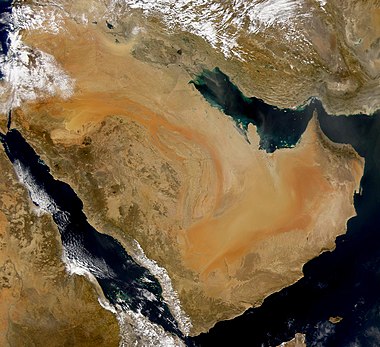 |
|
Photo credit: NASA |
Week 12
 |
|
Graph showing the population of Jordan since 1960. Photo credit: Eshcorp |
Week 13
 |
|
The 12th century Khor Virap monastery in the shadow of Mount Ararat in Armenia. Photo credit: Andrew Behesnilian |
Week 14
 |
|
Singapore has a total land area of 699 km2 and 193 km of coastline. It is separated from Indonesia by the Singapore Strait and from Malaysia by the Straits of Johor. Photo credit: CIA |
Week 15
 |
|
A tidal sandbar or shoal connecting the islands of Waya and Wayasewa of the Yasawa Islands, Fiji. Photo credit: Doron |
Week 16
 |
|
Lütt-Witt Moor, a bog in Henstedt-Ulzburg in northern Germany. Photo credit: Jan van der Crabben |
Week 17
 |
|
Darwin's theory set out a sequence of coral reefs forming round an extinct volcanic island and becoming an atoll as the island and the ocean floor subsided. Photo credit:
USGS |
Week 18
 |
|
Three types of horizon. Photo credit: Acdx |
Week 19
 |
|
Map of the cumulative tracks of all tropical cyclones during the 1985–2005 time period. The Pacific Ocean west of the International Date Line sees more tropical cyclones than any other basin, while there is almost no activity in the Atlantic Ocean south of the Equator. Photo credit:
Nilfanion |
Week 20
 |
|
A map of Antelope Island State Park, which covers the entirety of Antelope Island, an island in the southeastern portion of the Great Salt Lake in the U.S. state of Utah. Photo credit:
Justin Morris |
Week 21
 |
|
Looking towards Torres del Paine, Chile. Photo credit: Winky |
Week 22
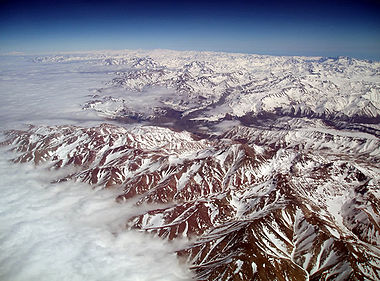 |
|
View of the Andes, a mountain range in South America. Photo credit: Romanceor |
Week 23
 |
|
Photo credit: Jorge Barrios |
Week 24
 |
|
Salar de Atacama is the largest salt flat in Chile. Photo credit: Romanceor |
Week 25
 |
|
Fynbos scrubland near Franschhoek in South Africa. Photo credit: Chris Eason |
Week 26
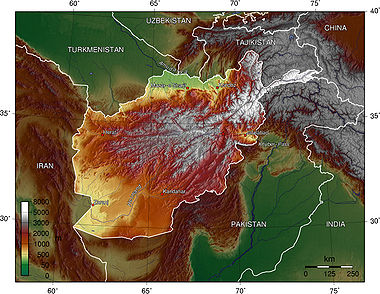 |
|
Photo credit: Captain Blood |
Week 27
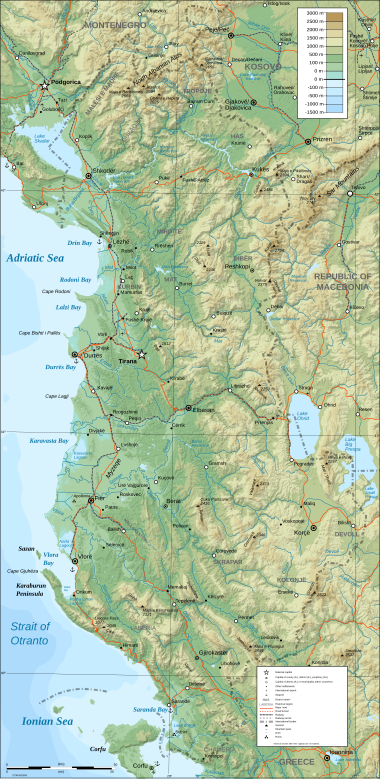 |
|
Topographic map of Albania. Photo credit: PZmaps |
Week 28
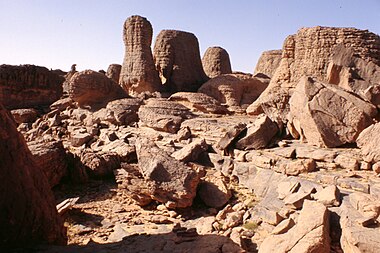 |
|
The range in Tassili n'Ajjer, Algeria is composed largely of sandstone. Erosion in the area has resulted in spectacular landforms being formed. Photo credit: Gruban |
Week 29
 |
|
View from the north of the city of Andorra la Vella, the capital of the Co-principality of Andorra, located high in the east Pyrenees between France and Spain at an altitude of 1,409 metres (4,623 ft). Photo credit: Kimdime69 |
Week 30
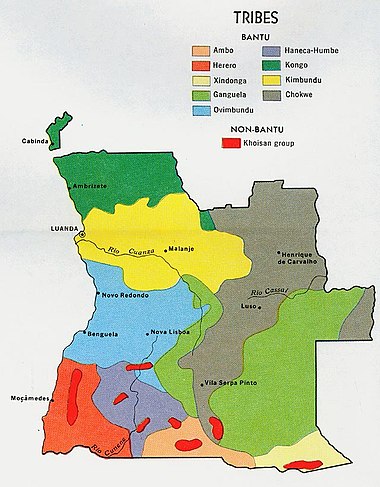 |
|
1970 map of the ethnic groups of Angola. The demographics of Angola consist of three main ethnic groups, each speaking a Bantu language: Ovimbundu, Mbundu (Kimbundu), and Bakongo. Other groups include Chokwe (or Lunda), Ganguela, Nhaneca-Humbe, Ambo, Herero, and Xindunga. Photo credit: Perry-Castañeda Library Map Collection |
Week 31
 |
|
Dickinson Bay beach in Antigua island, the main island of the country of Antigua and Barbuda. Antigua's economy is reliant upon tourism, and it markets itself as a luxury Caribbean escape. Photo credit: Paul Kowalow |
Week 32
 |
|
Provinces of Argentina. Argentina claims the Falkland Islands ("Islas Malvinas"), a UK overseas territory, as well as a slice of Antarctica, both of which it assigns to its Tierra del Fuego Province. Image credit: Dexxter |
Week 33
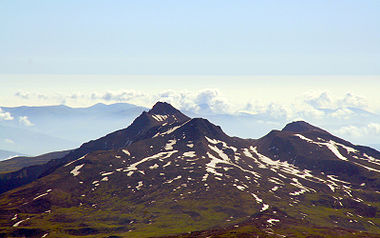 |
|
The four summits of Mount Aragats in Armenia. Photo credit: Bouarf |
Week 34
 |
|
A composed satellite photograph of Australia. Photo credit: NASA |
Week 35
 |
|
Innsbruck is the capital city of the federal state of Tyrol in western Austria. It is located in the Inn Valley at the junction with the Wipptal ( Sill River), which provides access to the Brenner Pass, some 30 km south of Innsbruck. Photo credit: Mathias Bigge |
Week 36
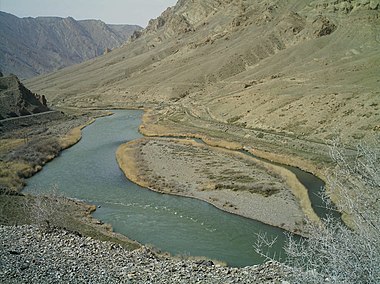 |
|
Aras River in the vicinity of Jolfa, Iran (left) and Nakhichevan (right), a landlocked exclave of Azerbaijan, in March 2006. Photo credit: M karzarj |
Week 37
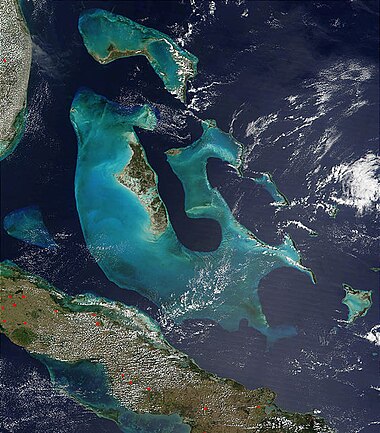 |
|
Satellite image of the Bahama Banks, submerged carbonate platforms that make up much of the Bahama Archipelago. The northern one is the Little Bahama Bank, and the southern the Great Bahama Bank. The Cay Sal Bank is also visible. Photo credit: NASA |
Week 38
 |
|
Road, towers and sea in Manama, Bahrain. Photo credit: Jayson De Leon |
Week 39
 |
|
The Ganges River Delta in Bangladesh is the largest inter-tidal delta in the world. In this photograph, the tributaries and distributaries of the Ganges and Brahmaputra Rivers deposit huge amounts of silt and clay that create a shifting maze of waterways and islands in the Bay of Bengal. Photo credit: NASA |
Week 40
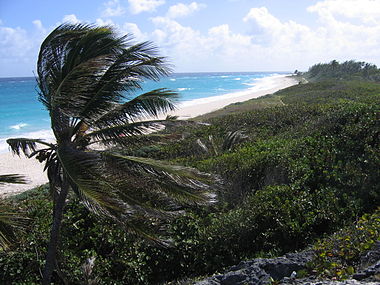 |
|
Silver Sands Beach, Surfer's Bay, Christ Church, Barbados. Photo credit: Postdlf |
Week 41
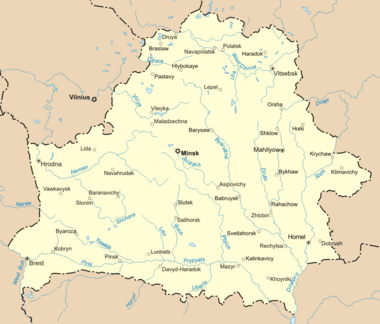 |
|
Photo credit: Unomano |
Week 42
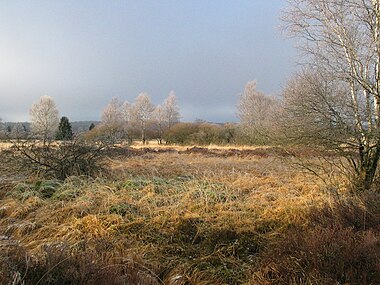 |
|
Typical landscape of the High Fens in the Ardennes, in Eastern Belgium. Photo credit: Aline |
Week 43
 |
|
Topography of Belize. Photo credit: Sadalmelik |
Week 44
 |
|
Map of Benin. Photo credit: CIA |
Week 45
 |
|
Gangkhar Puensum mountain from Ura La, Bhutan. Photo credit: Rhion |
Week 46
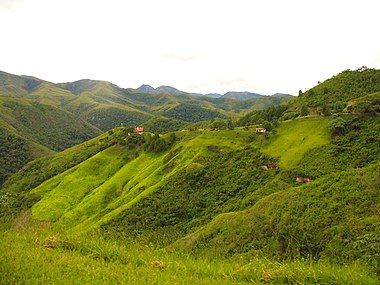 |
|
Bolivian landscape. Two hours from Santa Cruz de la Sierra is the village of Samaipata where you can see a fort and an archaeological site. Photo credit: Natalia Rivera |
Week 47
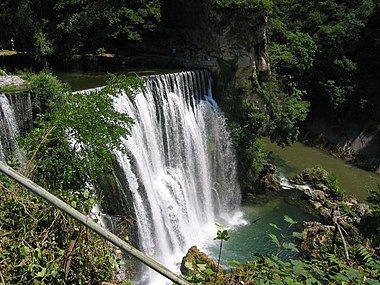 |
|
The famous waterfall in Jajce, Bosnia and Herzegovina, where the Pliva River meets the river Vrbas. It was 30 meters high, but during the Bosnian war, the area was flooded and the waterfall is now 20 meters high. Photo credit: Foant |
Week 48
 |
|
Typical region in the Okavango Delta in Botswana, with a rag rug of free canals and lakes, swamps and islands. Photo credit: Teo Gómez |
Week 49
Image credit: Felipe Menegaz
Week 50
 |
|
Map of Brunei. Photo credit: CIA |
Week 51
 |
|
Village of Kostenets in southwestern Bulgaria. In the background is the Rila mountain range, the highest mountain range of Bulgaria. The average annual precipitation in Rila is several times the average for Bulgaria. Photo credit: Cassini83 |
Week 52
 |
|
Savanna in Burkina Faso near the Gbomblora Department, on the road from Gaoua to Batié. Photo credit: Stefan Dressler |
Archive of pictures
2009
Week 1
 |
|
Cosmographia des Ptolemaios by Nicolaus Germanus. Photo credit: Nicolaus Germanus |
Week 2
 |
|
Map of the tsunami generated by the explosion of the Krakatoa Volcano in Indonesia on August 27, 1883. Photo credit: NOAA |
Week 3
Portal:Geography/Featured picture/2009, week 3
Week 4
 |
|
View of Port Louis and harbour looking west from the Citadel in Mauritius. Photo credit: Thierry |
Week 5
 |
|
Photo credit: Timm Guenther |
Week 6
 |
|
Climate zones of Africa, showing the ecological break between the desert climate of the Sahara and the Horn of Africa (red), the semi-arid Sahel (orange) and the tropical climate of Central and Western Africa (blue). Southern Africa has a transition to semi-tropical or temperate climates (green), and more desert or semi-arid regions, centered on Namibia and Botswana. Photo credit: Peel, M. C., Finlayson, B. L., and McMahon, T. A.
(University of Melbourne) |
Week 7
 |
|
Topography of Africa. Photo credit: NASA |
Week 8
 |
|
The cliffs, rocky outcrops and powerful waves indicate this coastline in Port Campbell in southern Australia is a high energy shoreline. Photo credit: Codrington, Stephen |
Week 9
 |
|
Schematic representation of the flow of nitrogen through the environment ( nitrogen cycle). Photo credit: EPA |
Week 10
 |
|
A meandering river. Photo credit: USDA & Mysid |
Week 11
 |
|
Photo credit: NASA |
Week 12
 |
|
Graph showing the population of Jordan since 1960. Photo credit: Eshcorp |
Week 13
 |
|
The 12th century Khor Virap monastery in the shadow of Mount Ararat in Armenia. Photo credit: Andrew Behesnilian |
Week 14
 |
|
Singapore has a total land area of 699 km2 and 193 km of coastline. It is separated from Indonesia by the Singapore Strait and from Malaysia by the Straits of Johor. Photo credit: CIA |
Week 15
 |
|
A tidal sandbar or shoal connecting the islands of Waya and Wayasewa of the Yasawa Islands, Fiji. Photo credit: Doron |
Week 16
 |
|
Lütt-Witt Moor, a bog in Henstedt-Ulzburg in northern Germany. Photo credit: Jan van der Crabben |
Week 17
 |
|
Darwin's theory set out a sequence of coral reefs forming round an extinct volcanic island and becoming an atoll as the island and the ocean floor subsided. Photo credit:
USGS |
Week 18
 |
|
Three types of horizon. Photo credit: Acdx |
Week 19
 |
|
Map of the cumulative tracks of all tropical cyclones during the 1985–2005 time period. The Pacific Ocean west of the International Date Line sees more tropical cyclones than any other basin, while there is almost no activity in the Atlantic Ocean south of the Equator. Photo credit:
Nilfanion |
Week 20
 |
|
A map of Antelope Island State Park, which covers the entirety of Antelope Island, an island in the southeastern portion of the Great Salt Lake in the U.S. state of Utah. Photo credit:
Justin Morris |
Week 21
 |
|
Looking towards Torres del Paine, Chile. Photo credit: Winky |
Week 22
 |
|
View of the Andes, a mountain range in South America. Photo credit: Romanceor |
Week 23
 |
|
Photo credit: Jorge Barrios |
Week 24
 |
|
Salar de Atacama is the largest salt flat in Chile. Photo credit: Romanceor |
Week 25
 |
|
Fynbos scrubland near Franschhoek in South Africa. Photo credit: Chris Eason |
Week 26
 |
|
Photo credit: Captain Blood |
Week 27
 |
|
Topographic map of Albania. Photo credit: PZmaps |
Week 28
 |
|
The range in Tassili n'Ajjer, Algeria is composed largely of sandstone. Erosion in the area has resulted in spectacular landforms being formed. Photo credit: Gruban |
Week 29
 |
|
View from the north of the city of Andorra la Vella, the capital of the Co-principality of Andorra, located high in the east Pyrenees between France and Spain at an altitude of 1,409 metres (4,623 ft). Photo credit: Kimdime69 |
Week 30
 |
|
1970 map of the ethnic groups of Angola. The demographics of Angola consist of three main ethnic groups, each speaking a Bantu language: Ovimbundu, Mbundu (Kimbundu), and Bakongo. Other groups include Chokwe (or Lunda), Ganguela, Nhaneca-Humbe, Ambo, Herero, and Xindunga. Photo credit: Perry-Castañeda Library Map Collection |
Week 31
 |
|
Dickinson Bay beach in Antigua island, the main island of the country of Antigua and Barbuda. Antigua's economy is reliant upon tourism, and it markets itself as a luxury Caribbean escape. Photo credit: Paul Kowalow |
Week 32
 |
|
Provinces of Argentina. Argentina claims the Falkland Islands ("Islas Malvinas"), a UK overseas territory, as well as a slice of Antarctica, both of which it assigns to its Tierra del Fuego Province. Image credit: Dexxter |
Week 33
 |
|
The four summits of Mount Aragats in Armenia. Photo credit: Bouarf |
Week 34
 |
|
A composed satellite photograph of Australia. Photo credit: NASA |
Week 35
 |
|
Innsbruck is the capital city of the federal state of Tyrol in western Austria. It is located in the Inn Valley at the junction with the Wipptal ( Sill River), which provides access to the Brenner Pass, some 30 km south of Innsbruck. Photo credit: Mathias Bigge |
Week 36
 |
|
Aras River in the vicinity of Jolfa, Iran (left) and Nakhichevan (right), a landlocked exclave of Azerbaijan, in March 2006. Photo credit: M karzarj |
Week 37
 |
|
Satellite image of the Bahama Banks, submerged carbonate platforms that make up much of the Bahama Archipelago. The northern one is the Little Bahama Bank, and the southern the Great Bahama Bank. The Cay Sal Bank is also visible. Photo credit: NASA |
Week 38
 |
|
Road, towers and sea in Manama, Bahrain. Photo credit: Jayson De Leon |
Week 39
 |
|
The Ganges River Delta in Bangladesh is the largest inter-tidal delta in the world. In this photograph, the tributaries and distributaries of the Ganges and Brahmaputra Rivers deposit huge amounts of silt and clay that create a shifting maze of waterways and islands in the Bay of Bengal. Photo credit: NASA |
Week 40
 |
|
Silver Sands Beach, Surfer's Bay, Christ Church, Barbados. Photo credit: Postdlf |
Week 41
 |
|
Photo credit: Unomano |
Week 42
 |
|
Typical landscape of the High Fens in the Ardennes, in Eastern Belgium. Photo credit: Aline |
Week 43
 |
|
Topography of Belize. Photo credit: Sadalmelik |
Week 44
 |
|
Map of Benin. Photo credit: CIA |
Week 45
 |
|
Gangkhar Puensum mountain from Ura La, Bhutan. Photo credit: Rhion |
Week 46
 |
|
Bolivian landscape. Two hours from Santa Cruz de la Sierra is the village of Samaipata where you can see a fort and an archaeological site. Photo credit: Natalia Rivera |
Week 47
 |
|
The famous waterfall in Jajce, Bosnia and Herzegovina, where the Pliva River meets the river Vrbas. It was 30 meters high, but during the Bosnian war, the area was flooded and the waterfall is now 20 meters high. Photo credit: Foant |
Week 48
 |
|
Typical region in the Okavango Delta in Botswana, with a rag rug of free canals and lakes, swamps and islands. Photo credit: Teo Gómez |
Week 49
Image credit: Felipe Menegaz
Week 50
 |
|
Map of Brunei. Photo credit: CIA |
Week 51
 |
|
Village of Kostenets in southwestern Bulgaria. In the background is the Rila mountain range, the highest mountain range of Bulgaria. The average annual precipitation in Rila is several times the average for Bulgaria. Photo credit: Cassini83 |
Week 52
 |
|
Savanna in Burkina Faso near the Gbomblora Department, on the road from Gaoua to Batié. Photo credit: Stefan Dressler |
